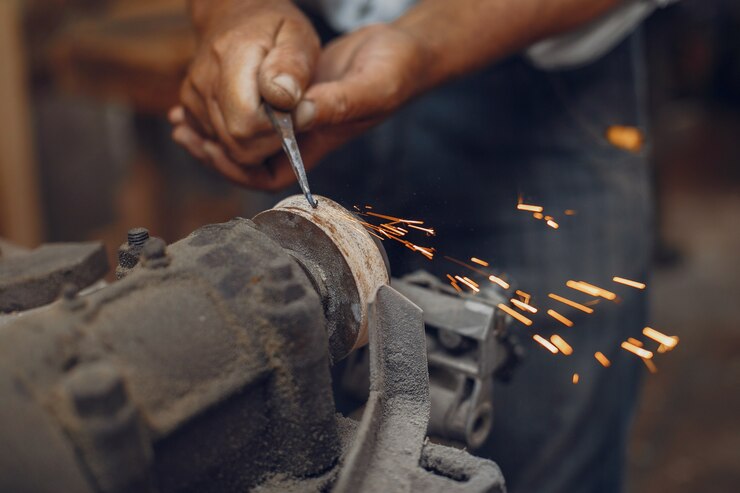Over-molding, a manufacturing process that involves molding one material onto an existing substrate, has emerged as a pivotal technique in enhancing product durability.
By combining the strengths of different materials, over-molding creates components that are resistant to wear, tear, and environmental factors.
Overmolding, a manufacturing process that combines the strengths of multiple materials, has emerged as a pivotal technique for enhancing product durability. By strategically combining materials and optimizing design, manufacturers can create components that are resistant to wear, tear, and environmental factors.
This article explores how over-molding leverages material properties and design principles to create products with extended lifespans.
Understanding the Role of Materials
The judicious selection of materials is paramount to achieving optimal durability through over-molding.
By combining the unique properties of different materials, die casting manufacturers in China can create components that are resistant to wear, tear, and environmental factors.
The key to enhancing durability through over-molding lies in the careful selection of materials.
Shock Absorption: Materials like TPU (thermoplastic polyurethane) or TPE (thermoplastic elastomer) offer excellent shock absorption properties. When over-molded onto a rigid substrate, they protect the core component from impacts.
Abrasion Resistance: Polymers like nylon and polycarbonate exhibit high abrasion resistance. Over-molding these materials onto components subjected to friction can significantly extend their lifespan.
Chemical Resistance: Certain polymers, such as fluoropolymers, are resistant to chemicals, solvents, and extreme temperatures. Over-molding with these materials can protect the substrate from degradation.
UV Protection: Incorporating UV-resistant materials into the overmold can prevent color fading, cracking, and degradation caused by sunlight exposure.
Enhancing Durability Through Design
Beyond material selection, the design of the over-molded component also plays a crucial role in durability.
Stress Distribution: By strategically placing the overmold, engineers can distribute stress evenly, preventing weak points and potential failure.
Reinforcement: Over-molding can reinforce existing components, providing additional support and rigidity.
Protective Barriers: The overmold can act as a barrier, shielding the substrate from environmental factors like moisture, dust, and chemicals.
Seamless Integration: A seamless bond between the substrate and overmold is essential for optimal durability. Advanced bonding techniques and material compatibility are crucial.
Real-World Applications
Over-molding has found widespread application in industries where product durability is paramount:
Automotive: Over-molded components like steering wheels, gear knobs, and door handles offer improved grip, comfort, and resistance to wear.
Electronics: Over-molding protects delicate electronic components from shocks, vibrations, and environmental factors.
Medical Devices: Over-molded medical instruments and equipment must withstand sterilization processes and repeated use without compromising performance.
Industrial Equipment: Over-molded components in industrial settings often endure harsh conditions, requiring exceptional durability.
Case Studies
Case Study 1: Automotive Industry – Steering Wheels
Challenge: Creating steering wheels that are comfortable, durable, and provide excellent grip in various weather conditions.
Solution: Over-molding a soft, tactile TPE or TPU over a rigid plastic or metal core. The soft overmold enhances grip and comfort, while the rigid core provides structural integrity. Additionally, incorporating conductive materials into the overmold can enable features like heating or airbag deployment.
Case Study 2: Consumer Electronics – Mobile Phone Cases
Challenge: Protecting smartphones from drops, shocks, and scratches while providing a comfortable grip.
Solution: Over-molding a shock-absorbing TPU or TPE over a hard polycarbonate or ABS shell. The TPU or TPE layer dissipates impact energy, while the hard shell protects internal components. Incorporating antimicrobial properties into the overmold can enhance hygiene.
Case Study 3: Medical Devices – Syringes
Challenge: Creating syringes with comfortable grips that are resistant to chemicals and sterilization processes.
Solution: Over-molding a soft, non-slip TPE or silicone over the syringe barrel. The overmold enhances grip, provides comfort for healthcare professionals, and withstands repeated cleaning and sterilization.
Case Study 4: Sports Equipment – Golf Grips
Challenge: Developing golf grips that offer excellent grip, durability, and shock absorption.
Solution: Over-molding a rubber or elastomeric material over a rigid core. The overmold provides a non-slip surface, absorbs shock from impact, and enhances player comfort.
Case Study 5: Industrial Applications – Tool Handles
Challenge: Creating tool handles that are comfortable, durable, and resistant to chemicals and extreme temperatures.
Solution: Over-molding a thermoplastic elastomer (TPE) or thermoplastic polyurethane (TPU) over a metal or plastic core. The overmold provides insulation, shock absorption, and a non-slip grip, while the core provides structural support.
Conclusion
Over-molding is a versatile technique that significantly enhances product durability. By carefully selecting materials, optimizing design, and employing advanced manufacturing processes, manufacturers can create components that withstand the rigors of everyday use and extend product lifespan. As technology continues to advance, we can expect to see even more innovative applications of over-molding in the future.
Also Read:-

